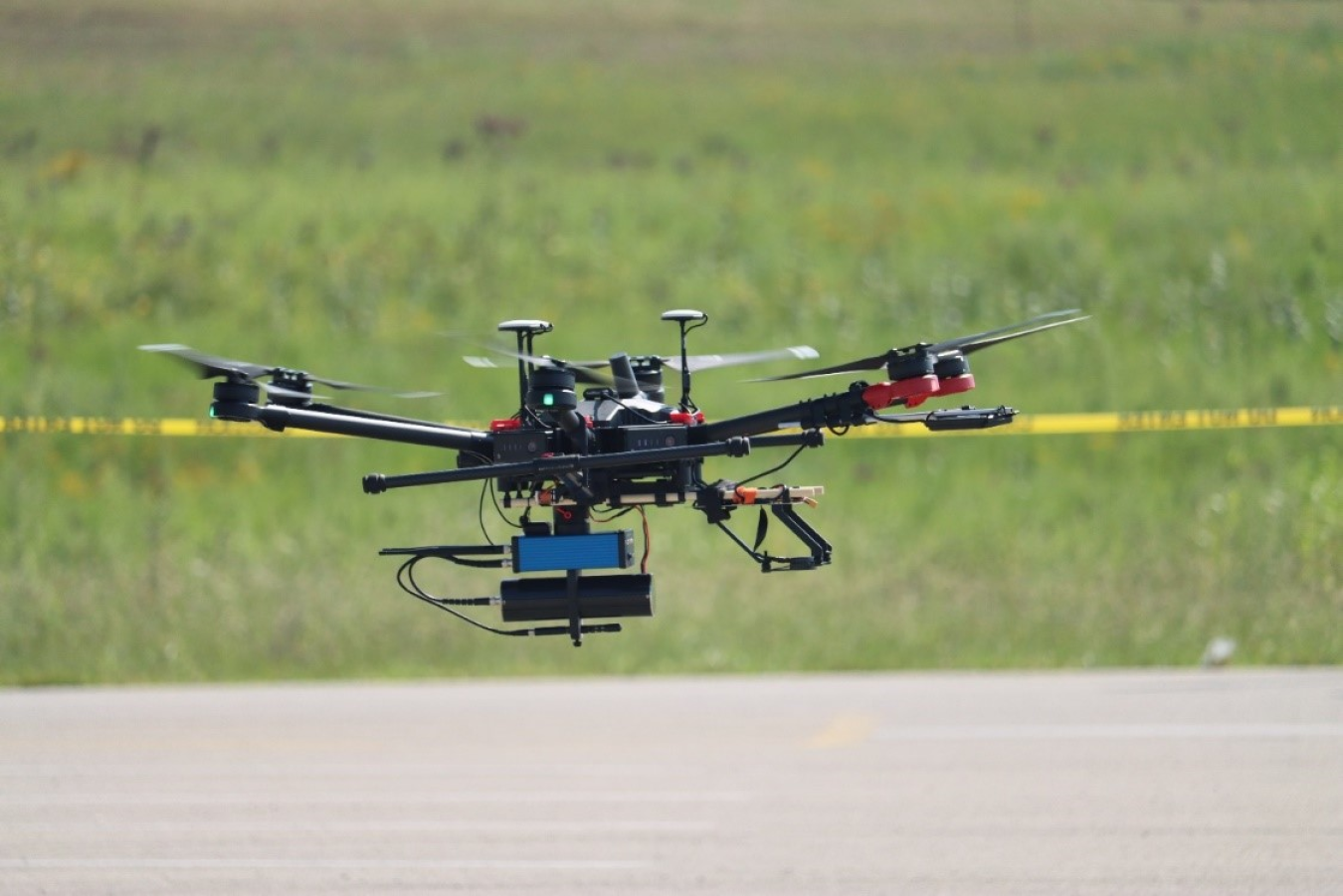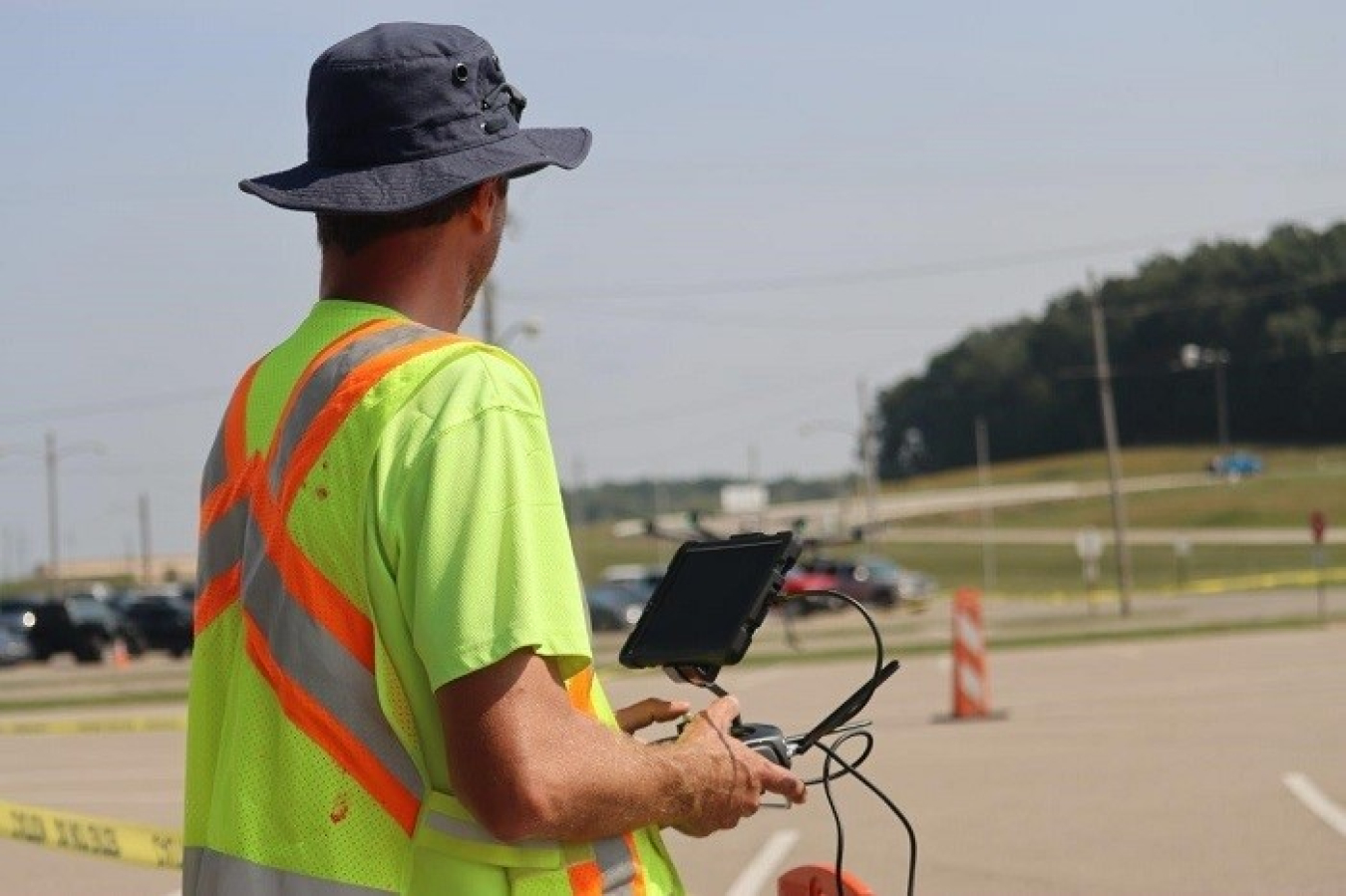A drone outfitted with radiation detectors recently underwent testing at the Portsmouth Site for potential future use as part of growing collaboration between EM and the state of Ohio.
Portsmouth/Paducah Project Office
October 31, 2023
PIKE COUNTY, Ohio – A drone outfitted with radiation detectors recently underwent testing at the Portsmouth Site for potential future use as part of growing collaboration between EM and the state of Ohio.
“The Portsmouth Site has the radioactive source materials while the Ohio Department of Health (ODH) has the drones,” Portsmouth/Paducah Project Office Nuclear Safety Oversight Lead Tom Hines said of the partnership. “We’re hoping to follow ODH’s lead and incorporate this into the DOE Emergency Management Program. The potential to use a drone to detect chemicals following an accidental release would be a highly valuable asset for the DOE response capability.”

Aircraft System Data Manager Jamie Davis operates a drone at the Portsmouth Site in a test effort to collect data for potential future use by the state of Ohio and EM.
The successful drone testing collected data for ODH to further develop its procedures and policies. The Ohio Department of Transportation supported the testing.
EM will also evaluate the data to determine if the technology is beneficial for use at its cleanup sites. The drone has video and photographic capabilities, and can connect wirelessly to a laptop. Data can also be shared through a smartphone app.
“This event allowed ODH to utilize radioactive source material they would not normally have access to,” said Rob Litten, source control coordinator for Fluor-BWXT Portsmouth (FBP), EM's decontamination and decommissioning contractor for the Portsmouth Site. “This increased the scope of their testing and confirmed the detection capabilities of the drones and detection equipment.”
ODH was pleased with the cooperation and flexibility of everyone involved with the testing, said Kevin Banks, nondestructive assay oversight with Enterprise Technical Assistance Services, the Portsmouth Site’s technical support contractor.
“ODH’s initial goal was to be able to create an exclusion zone with their technology in the event an accident containing radioactive material occurred,” Banks said. “Prior to today’s event, they had not been able to test the capabilities of their equipment due to their limited radioactive source access.”
Personnel would be prohibited from entering an exclusion zone due to an accident involving radioactive material.
-Contributor: Michelle Teeters

